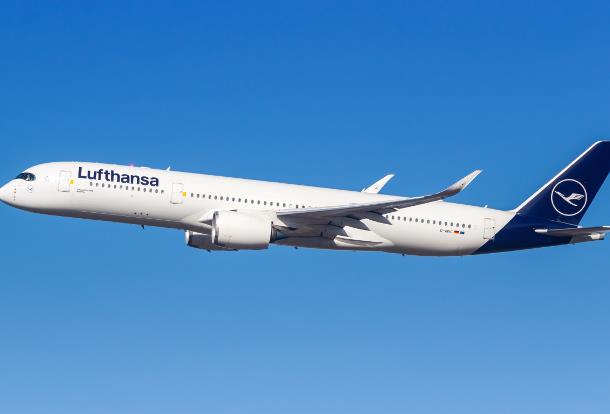ChinaTravelNews, Ritesh Gupta - Airlines as organizations are undergoing massive transformation.
Be it for Lufthansa’s “7to1 – Our Way Forward” strategic initiative or China Eastern’s decision to establish a low-cost carrier set up in addition to its core full service operations, airlines are embracing change. A major impetus today is on digitalisation, and running a data-driven organization to optimize operations and customer experience.
As the Lufthansa group asserts, the gap between the qualitative skills required of employees in the future and the existing employees has to be identified and managed.
Preparing staff for this transformation
For a deeper understanding, sustained exposure and training needs to be worked out. What is required in terms of skills, changes in existing infrastructure or new investment, best of breed vs. fully integrated solution, potential use cases etc. need to be ascertained on an ongoing basis. Continual, formal dialogue needs to take place, and representatives from different departments need to be engaged.
For instance, it imperative to assess how data and technology can not only drive incremental revenue or a superlative customer experience, but how it can curb online fraud, too.
When I spoke to a senior executive from a leading Chinese carrier last week, it emerged that the team was being briefed about the potential of machine learning.
“To get immediate results, companies need to implement a machine learning that works on global data in real-time,” shared a source. “Humans simply cannot review orders and information fast enough to keep up with the demand for last-minute hotel bookings or same-day flight reservations. Fraud solution providers and payment processors are taking notice and the industry is moving toward integrated systems. To stay competitive, businesses should think seriously about automating as much of their fraud detection as possible. How else can they hope to scale accurate detection as transaction volume grows? After all, increasing sales is the goal, right? Smart automation starts with machine learning.”
Developing a culture
Today airlines are attempting to ensure passengers are duly recognized across every digital touch point.
And for this to happen, an entity needs to be “customer-centric”, and also develop the strategy of big data at the company level,” says Xuewu Wang, Data Labs Project Manager, Data Product Department, China Eastern.
Lufthansa, in its annual report, highlighted that the group encourages its staff to “make use of development opportunities, also outside the company, and so to increase their general employability. This enables a greater degree of internal and external rotation, which increases the qualifications and experience of the workforce.”
Also, “appropriate instruments” have been set up to administer the functioning and acceptance risk that arises when changes in processes and behavior are round the corner. Also, new platforms have been devised and those who are managing cultural change in the Lufthansa Group “have been networked with one another to compare notes on best practice”.
Goal
China Eastern was clear with what it wanted to achieve by refining its data infrastructure, led by a dedicated team.
“Our (goal) is to make flying a positive experience, We focus on being customer-centric, target continuous improvement and innovation. We gather information – assess issues raised or concerns of our customers from website, news, social media, call centre and other channels. We analyze customer’s travel habits through data cooperation,” said Wang. “We strive to become the best travel service provider,” added Wang, who shared that the company looks at data related to hotels, car rental, rail etc. as well and the core objective is to get closer to analyzing the behavior and pattern. In order to know more about its customers, China Eastern created a unified customer view and worked out a mechanism to serve frequent flyers via a dedicated system. “We developed our customers’ tag library. And we had defined hundreds of tag for each customer,” he said.
From an organization perspective, Wang says, “In cross-functional cooperation, our common goals are how to improve the quality of service. The timeliness and effectiveness of information is critical to timely response to customer demand and improvement in customer experience and satisfaction.”
Dedicated team – focused on innovation
For its part, China Eastern formulated the strategy of big data early on, shared Wang.
The team decided dig about - how to use big data? There were three topics, according to Wang.
1. What impact will big data have on the business (app scenarios, website, social media, third party data etc.).
2. Use the right technology and tools to analyse the data
3. How to visualize the big data?
In the context of being data-driven, several questions need to be answered: As Dave O’Flanagan, CEO, Boxever shared:
1. First introspect why you’re doing it. Do not set out for a large repository of data till there is clarity on the return on investment. Such initiative needs to exemplify the business value to an organisation, which can be direct revenue.
2. Start small. Deploy the solution in your digital channels first, focusing on minimising integration while and maximising impact. Web, email and mobile tend to be apt avenues to start then expand to call centre, operations, inflight and beyond. This helps in finalising the business case to deploy the solution across your organization.
3. Hire the best talent. Data is useless without people to help you understand it and translate the insights into personalized customer experiences.
4. Align your organization. Omni-channel can mean omni-department for your organization and key functions will need to work together to make it a reality. The organisational challenges in achieving true omni-channel are every bit as difficult as the technical ones.
China Eastern’s data infrastructure
“We built our data warehouse, built our three data marts - Marketing, Control and Operations - based on Enterprise Data Warehouse, a big data platform and also focused on management of real-time data (an IT system that can provide real-time data to any other system if required). Data analysis attained the speed of “seconds”. We chose to integrate internal and external sources of structured and unstructured data. We set our data standard and established the enterprise master data platform, data governance, and decided to manage data as a valuable asset.”
Other than gradually stepping up the data infrastructure, the team also set up its Business Intelligence Competence Centre Team, led by CIO. The original strength was 20 and this today has risen to 30. According to Wang, the team fosters a culture of innovation – a regular meeting on a fortnight basis and the team discusses new possibilities.
“At the end of 2015, in order to capitalize on our data, we deployed a big data platform and set up our Data Labs unit. We also have a “data expert team” in place. It consists of business experts, statisticians and software engineers. The experts in this team are work together. Of course, we are looking at generating economic benefits. In Data Labs, we advocate the value of data discovery and sharing, analysis ability – we learn from each other and solve the business issues by make full use of each other’s skills/ talent.
With a team and culture being in place, China Eastern believes it is ready to reap more benefits.
“Big data investment has a great strategic significance. The ability to obtain and analyze big data would be the core competitiveness in data era. For instance, precision marketing can improve the efficiency of marketing, lower the costs,” summed up Wang.




